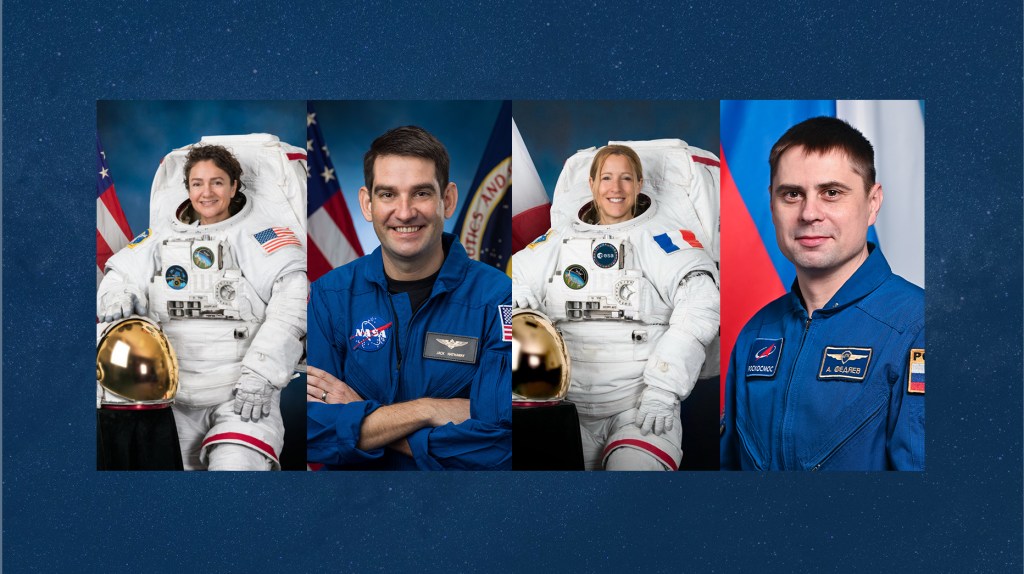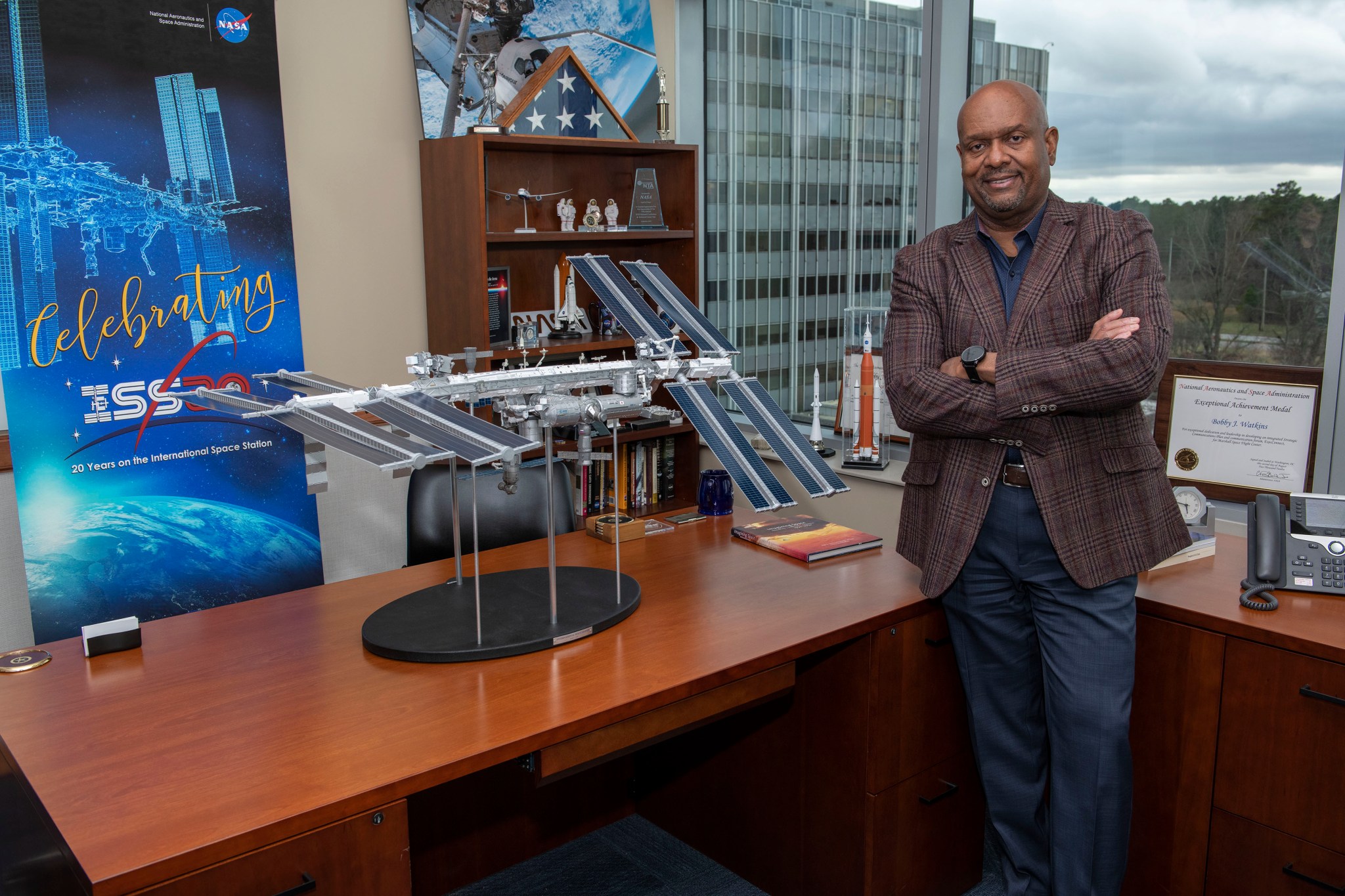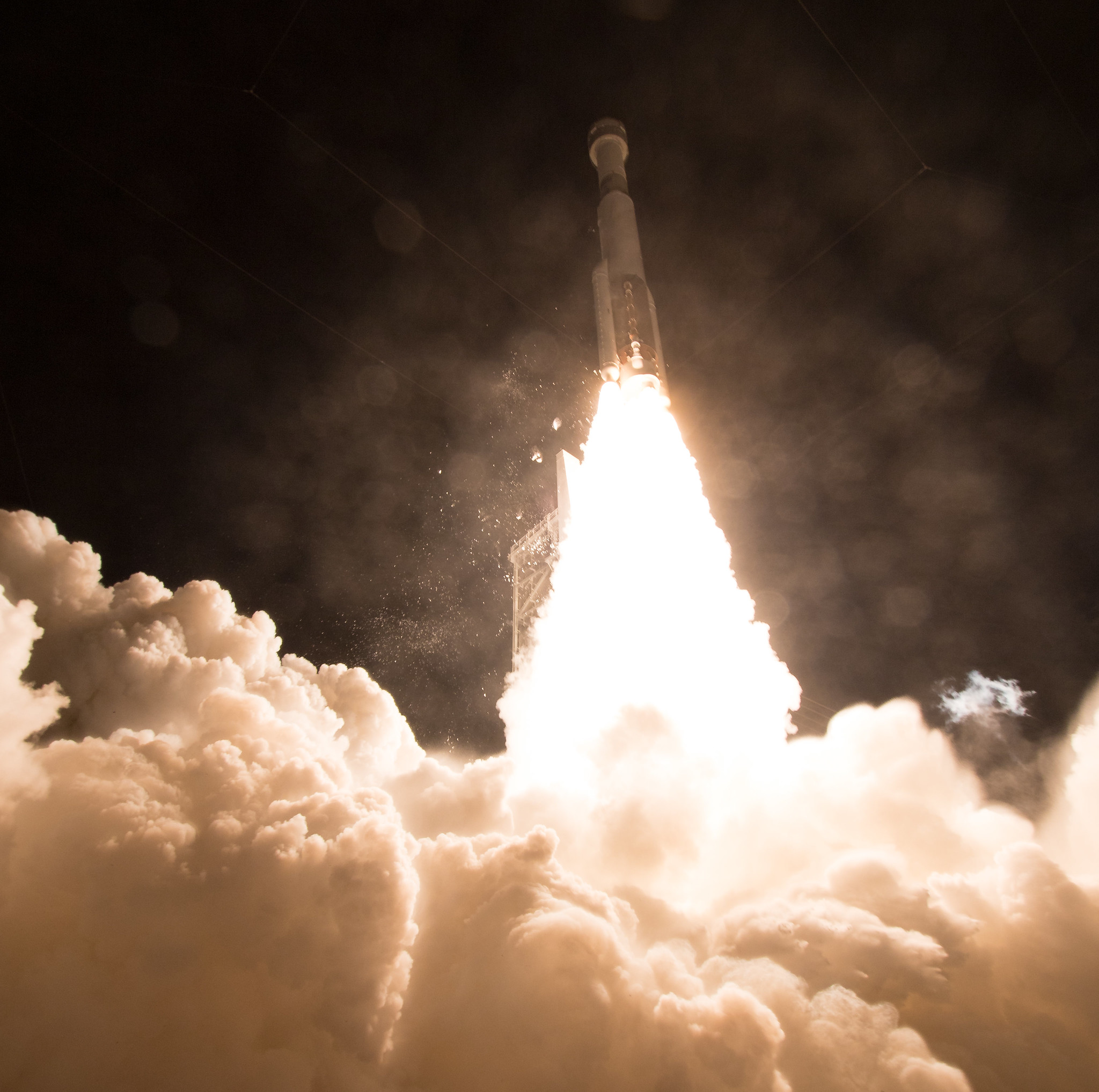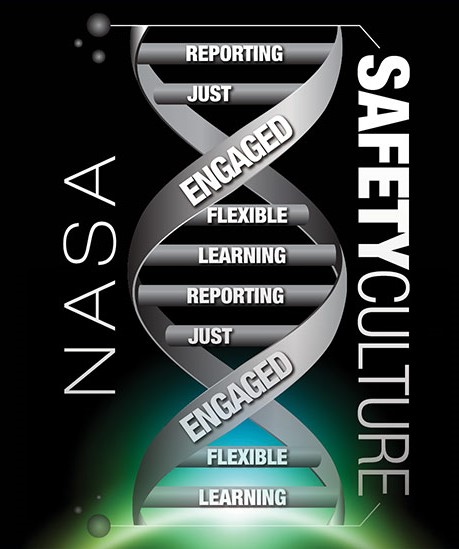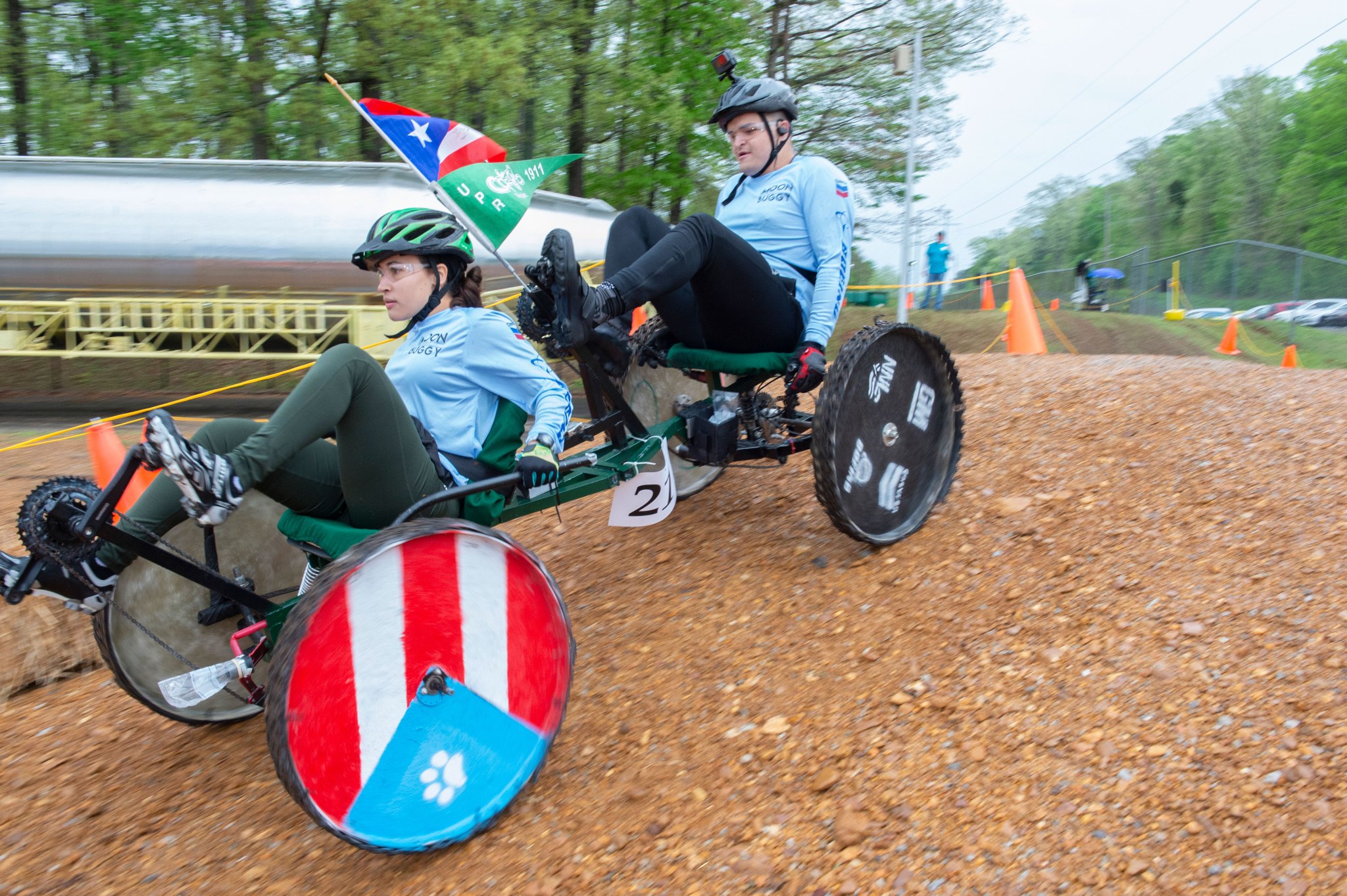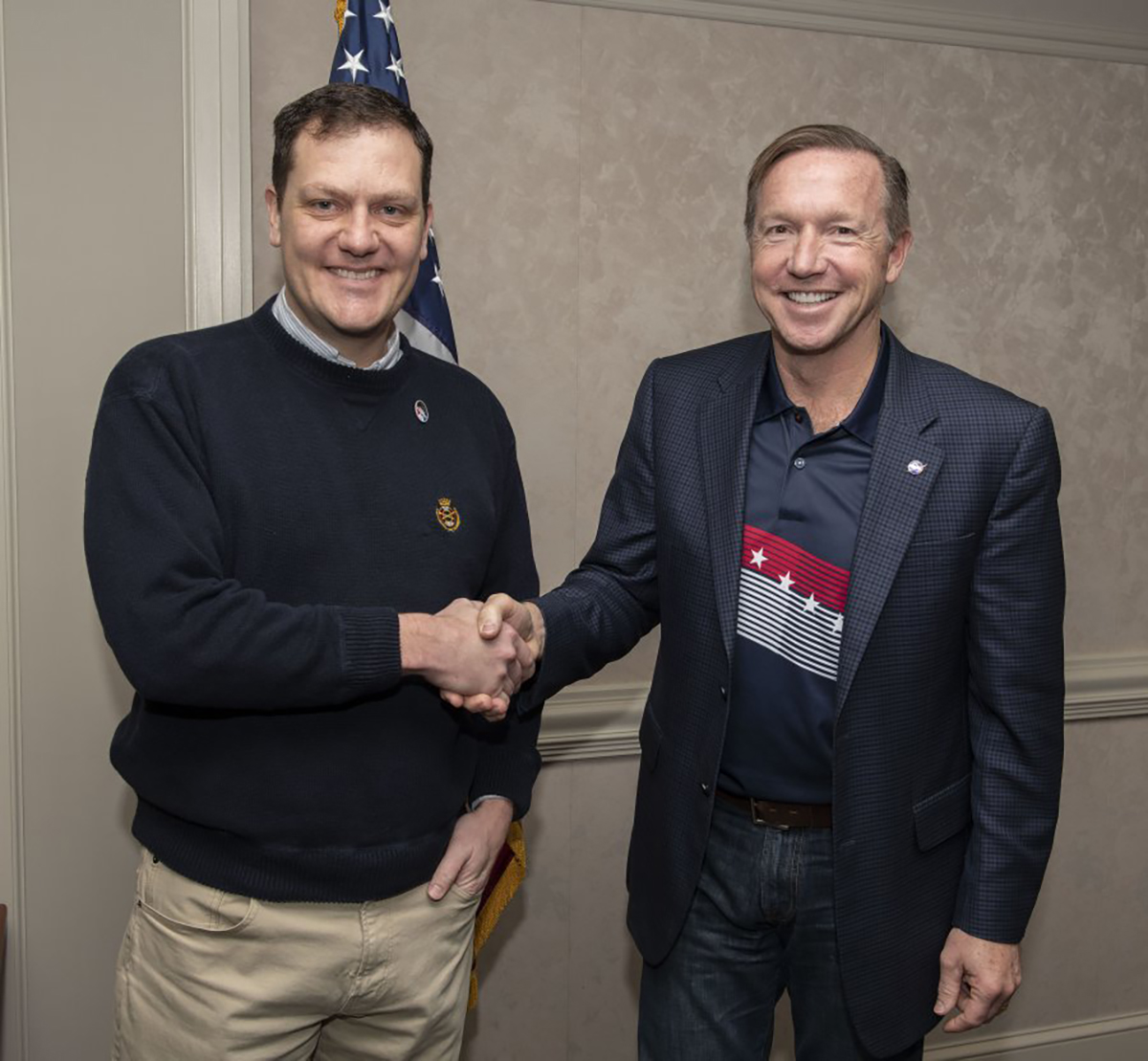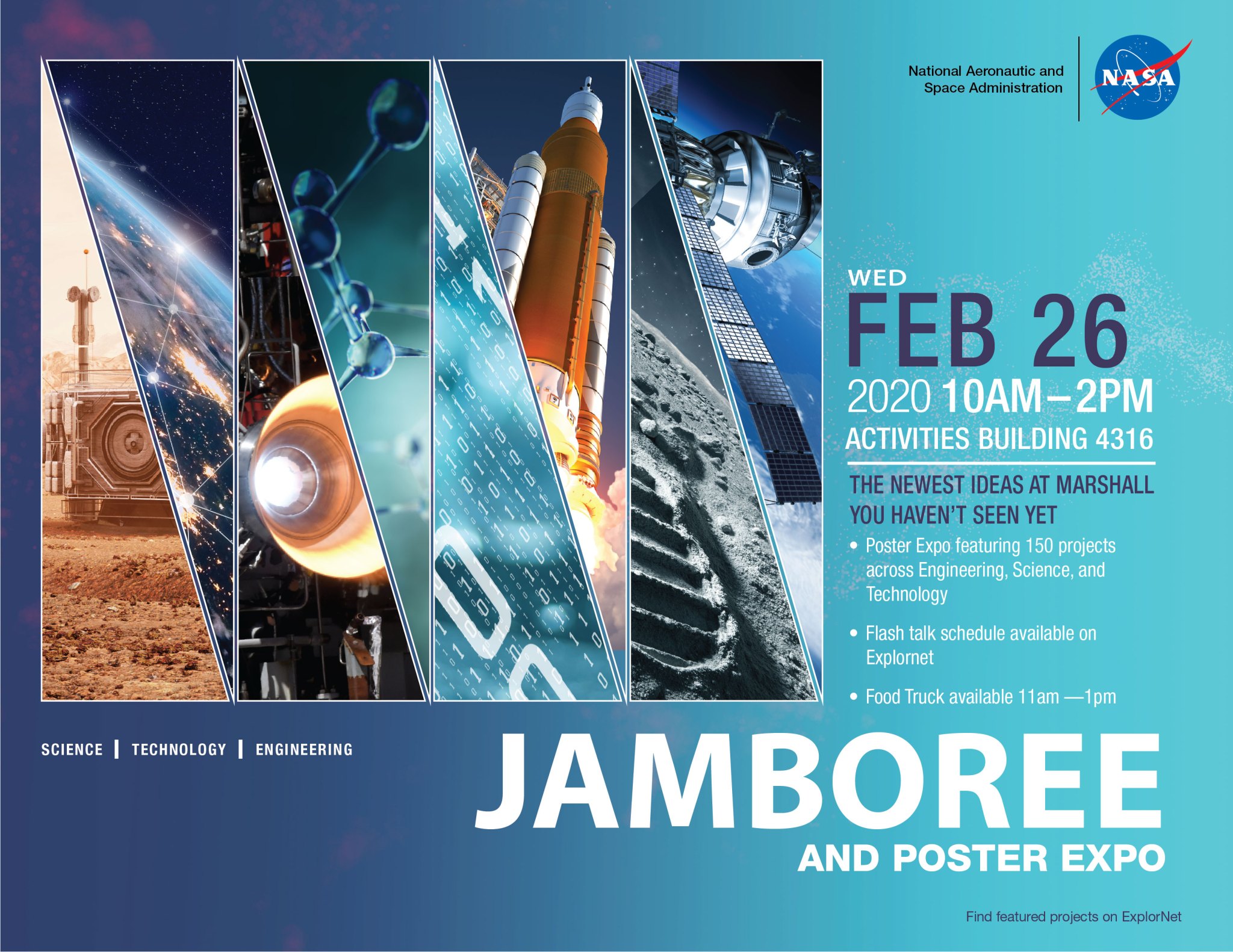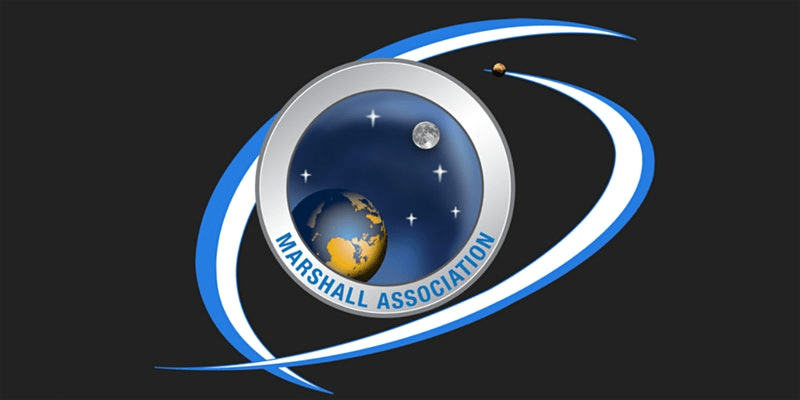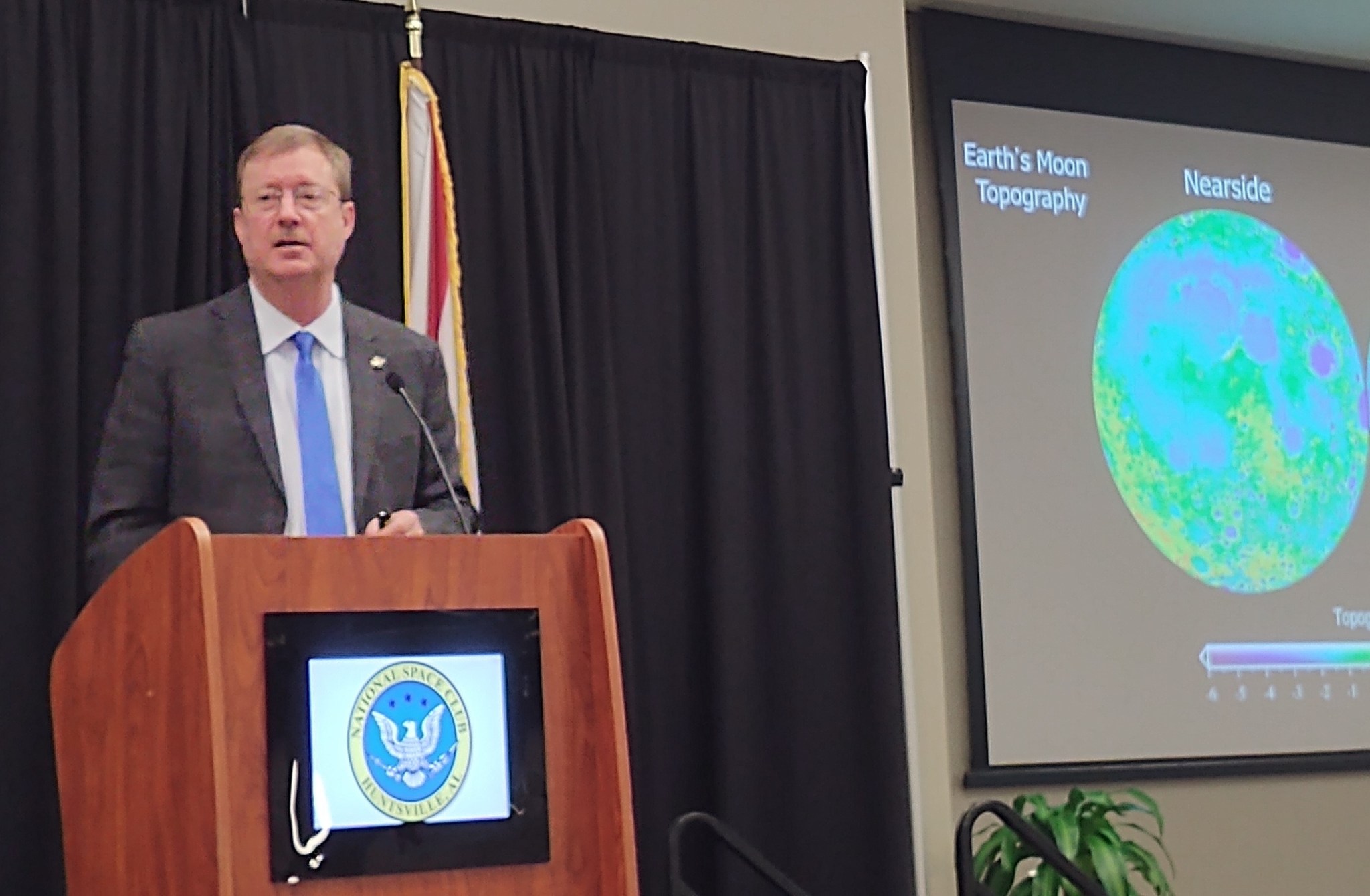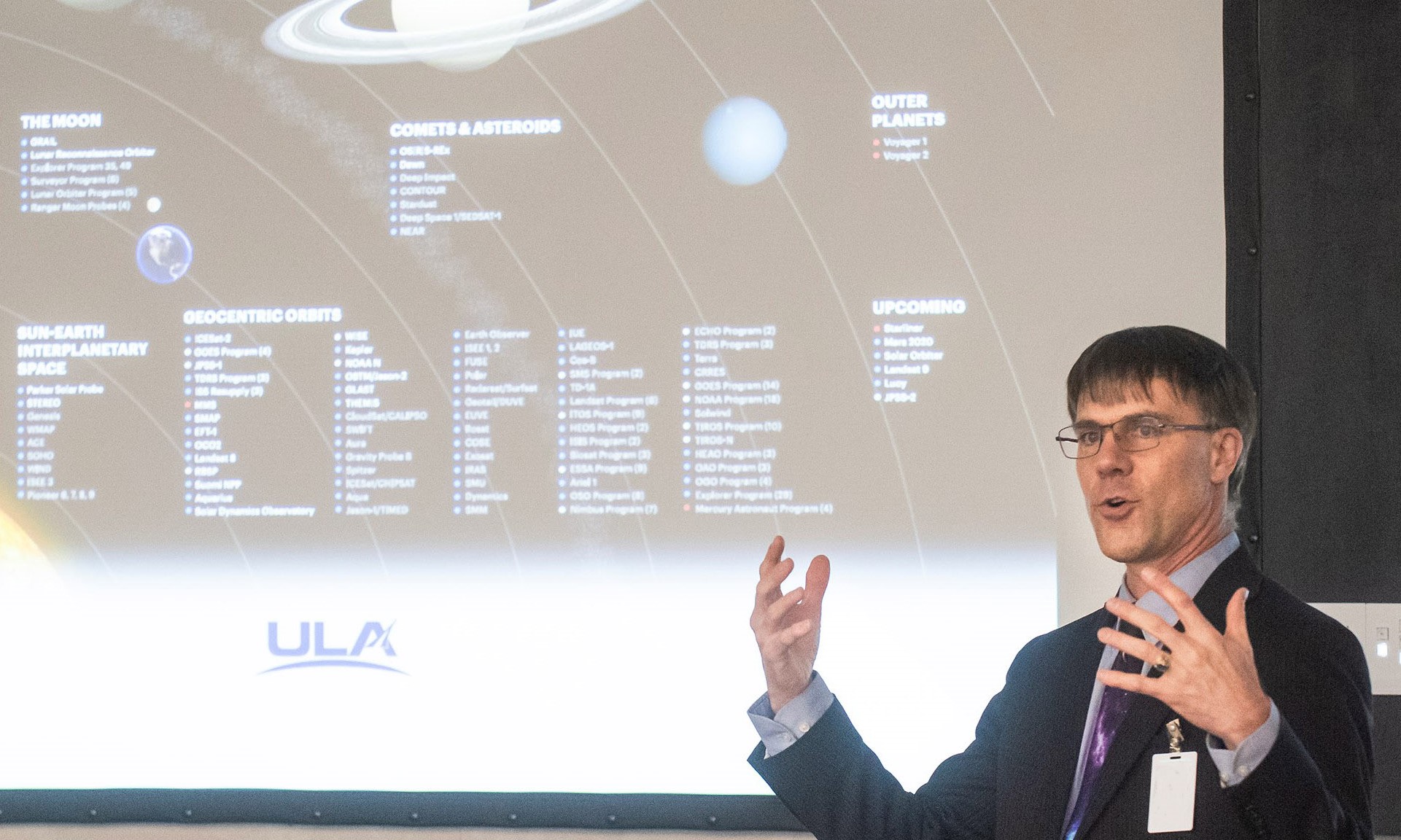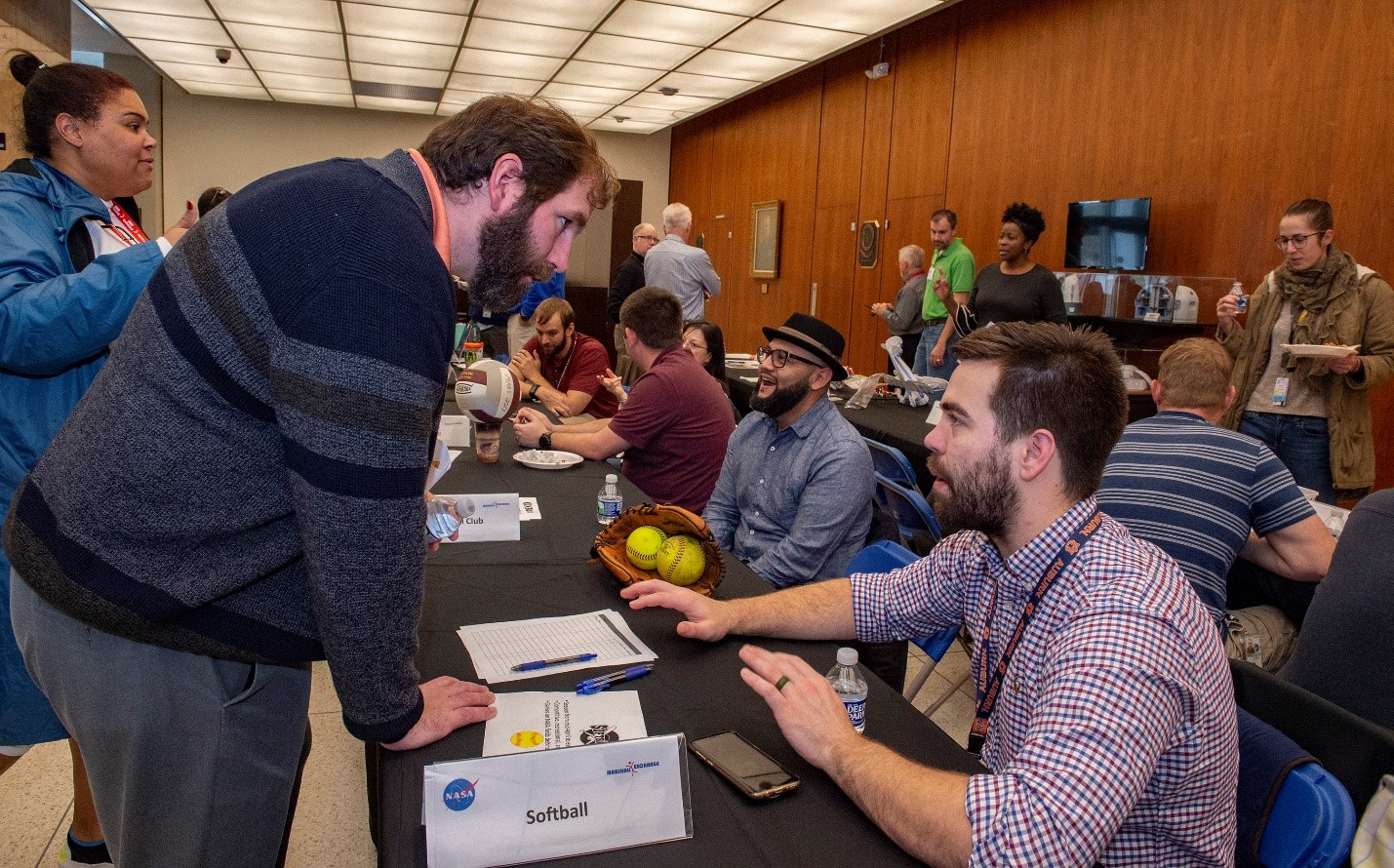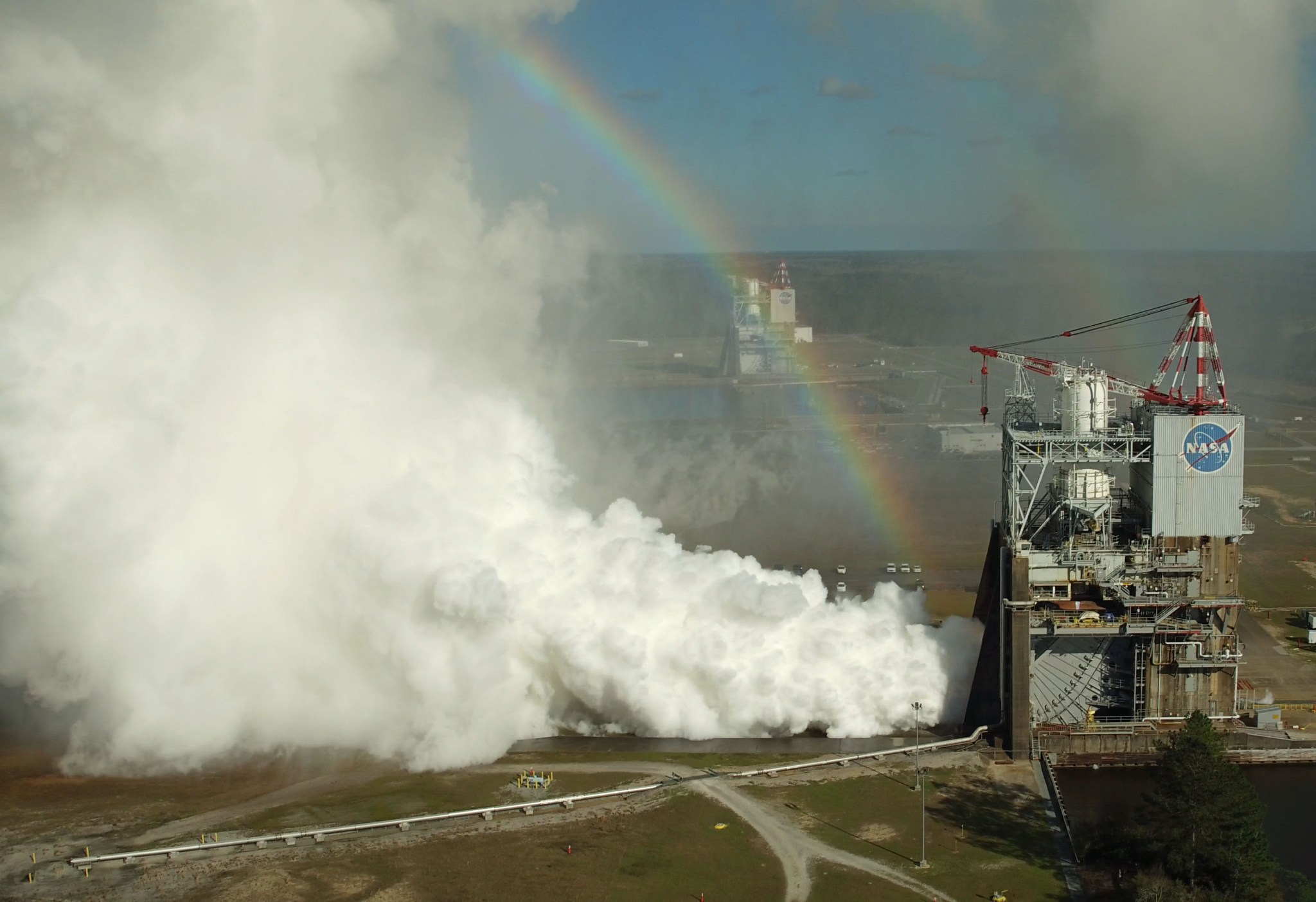In This Week’s Star
- Take 5 with Bobby Watkins
- Marshall Works to Ensure Commercial Rockets Are Ready to Fly
- Marshall Launches 2020 Safety Culture Survey
- NASA Announces Teams for 2020 Human Exploration Rover Challenge
- Tyler Cochran Recognized As ‘HEO HErO’
- Marshall Jamboree, Poster Expo to Celebrate Science, Tech, Engineering Feb. 26
- Marshall Association 2020 Luncheon Speaker Series Kicks Off with Marshall Director Singer
- NASA’s Deputy Chief Scientist Journeys through Moon’s History at National Space Club Event
- United Launch Alliance Chief Scientist Presents Company’s History, Future at Tech Talk
- Clubs Invite New, Prospective Members at Marshall’s ‘Club Day’
- This Week in NASA History: First RS-25 Engine Test of 2017 – Feb. 22, 2017
Take 5 with Bobby Watkins
Bobby Watkins was going to stay at NASA for two years. The son of a small-town grocer in Georgia, Watkins, who always had an eye toward public service, planned on briefly working for the government before ultimately running for city council.
Now, 34 years later, he can’t imagine a life anywhere else.
Watkins, manager of the Human Exploration Development & Operations Office at NASA’s Marshall Space Flight Center since 2017, credits NASA’s mission with making him go all-in on the agency, and it’s that mission that has led to the exciting times he’s working in today.
Through its development of the Gateway, the support of the Commercial Crew Program and the continued operations of the International Space Station, HEDO is developing the testbed and building blocks of the Artemis lunar exploration missions, which will put the first woman and next man on the Moon by 2024.
Watkins recently sat down with Marshall communications specialist Adam Farragut to discuss the integral work HEDO does in advancing human exploration and discovery while carving out its place in space exploration history.
Question: How does the Human Exploration Development & Operations Office define and achieve success?
Watkins: At our recent offsite, one of the things we focused on is the vision for the HEDO office which is “advancing human exploration and discovery.” When we look at that, it gives us a broad umbrella of how we can look at ISS as we know it today, and also think about ISS and space operations for the future. The way we do ISS operations today is probably not the way we’ll do ISS operations 10 years from now, so I think about where I want to be in the next three, five and 10 years. It’s a short-term, mid-term and long-term approach. I encouraged the team to start thinking about what we’re doing now and how we can best impact what we’ll do later. Ultimately, success in that is how we’re going to advance human exploration and discovery.
Question: What is the team environment like in the office and how do you encourage collaboration and integration?
Watkins: One of the things I talk about all the time, and I learned this when working in Mission Operations, is that it’s all about the team. Luckily, when I got this job, Payload Operations already had that team mentality and they believe in it. It’s my job to not screw up that team mentality, but also bring in the other parts of HEDO to make sure they feel part of that larger team. It’s not all about Payload Operations and it’s not all about what we do for Commercial Crew: It’s about what we do collectively as a team. So I’m strong on collaborating within HEDO. But at the same time, collaboration reaches over to the Space Launch System, the Human Landing System and other parts of this center. It also reaches out to other parts of this agency, whether we’re talking NASA’s Johnson Space Center, or some of the work we’re doing with NASA’s Kennedy Space Center to get ready for the Green Run testing, etc. We have to always be collaborating, integrating and working across the various programs and projects to make sure we can efficiently execute our jobs.
Question: What sort of partnerships are your team pursuing to help the agency and the nation achieve our Artemis goals in 2020 and beyond?
Watkins: One of the things we’re going to try to pursue in the near future is commercial partnerships. When I say near future I’m talking the next 2-5 years, and commercial companies like SpaceX, Blue Origin and Northrop Grumman, etc., will be to doing operations long term for ISS, and newer space companies may be going up to do commercial docking activities. Our control center is a benchmark for how to do that and we are well suited to support these activities right here at Marshall Space Flight Center. I think that would be huge when you talk about partnerships.
Question: As you know, it’s the 20th anniversary of the International Space Station. What is the significance of that milestone to you?
Watkins: Having astronauts, science and all of this particular work on ISS over 20 years is a huge accomplishment. But we’re not done yet. We still have a lot of work to do and we’re going to use it as a building block for going to the Moon. We’re going to build from ISS to go to the Gateway and also learn from ISS how we transcend to the lunar surface. All of our ISS work really translates to how we’re going to go to Mars. This 20-year anniversary is just the tip of it. We’ve got to be looking at what it’s going to look like in 40 or 50 years. We’ve got a great start, but we still have a long way to go.
Question: With a resume as wide-ranging as yours, what stands out to you as your favorite project you’ve been a part of?
Watkins: Being director of NASA’s Michoud Assembly Facility was just a really cool job for me. To be the person that was over that facility was very humbling and I really enjoyed that work. It well prepared me for the challenge I’m in now, when you start thinking of ISS and what we’re going to do with it in the long term. Some of those same principles of dealing with partnerships and commercialization that I picked up from Michoud, I’m applying them back to what we do for this organization. That’s how we prepare for where we’re going for the future. As ISS continues to trend and maybe be more commercialized, I’ve got to make sure we have a good portfolio to work with.
Previous Take 5s:
Neil Rodgers, director of the Office of the Chief Information Officer at Marshall
Lisa Watson-Morgan, manager of NASA’s Human Landing System Program
Mary Beth Koelbl, deputy director of Marshall’s Engineering Directorate
Marshall Works to Ensure Commercial Rockets Are Ready to Fly
By Janet Anderson
NASA’s Commercial Crew Program — a partnership between government and industry to develop and fly human space transportation systems – works to achieve safe, reliable and cost-effective access to and from the International Space Station and low-Earth orbit.
In that partnership, Boeing, United Launch Alliance and SpaceX are designing, manufacturing, analyzing and testing the spacecraft and rockets, with NASA contributing its expertise and support in developing and certifying the systems, spacecraft and related hardware operations.
“Even though it’s a commercial program, NASA has expertise that no one else has, and we are here to help our commercial partners,” said Steve Gaddis, deputy manager of the Commercial Crew Program Launch Vehicle Office at NASA’s Marshall Space Flight Center. “Due to their experience, the engineers at Marshall understand launch vehicles and propulsion systems better than anyone.”
Commercially transporting crew to and from the International Space Station will establish reliable and cost-effective human transportation to space. NASA’s commercial providers’ ability to transport crews will enable the next step in human exploration with the Artemis Program, in which the first woman and next man will step foot on the Moon by 2024.
The Commercial Crew Program has challenged the way NASA does business. The agency reevaluated its technical insight model and relies more on a shared accountability model with the commercial rocket provider. The partnership approach allows NASA engineers insight into a company’s development process while the agency’s technical expertise and resources are accessible to each company.
“This new model has allowed NASA personnel to challenge some of our more traditional approaches but without compromising the safety of our crew or the public,” Gaddis said.
The team at Marshall is helping certify two commercial crew transportation systems for human spaceflight: the Atlas V, which is being assembled at the United Launch Alliance facility in Decatur, for use by Boeing; and the Falcon 9, used and built by SpaceX at its facility in Hawthorne, California.
“Both launch vehicle configurations have been assessed to the design and construction standards set by NASA, the military and other organizations under the shared accountability and assurance Commercial Crew Program model,” said Deborah Crane, launch vehicle chief engineer for the Commercial Crew Program. “Our team has diligently worked through the technical challenges, analyses, processing and testing necessary to ensure that Boeing, ULA and SpaceX have provided sufficient verification evidence that adequately meets these standards.”
Upon NASA certification of their rocket, each company will have the ability to fly six crew missions to the space station.
“One of the challenges our NASA and commercial provider teams have faced is taking a rocket designed for commercial cargo and verifying that it meets the standards and requirements for human spaceflight,” Crane said. “Existing hardware and software, or any design modifications, all require rationale, evidence and documentation to support human rating of the launch vehicles.”
The Commercial Crew Program is primarily based at NASA’s Kennedy Space Center. About 500 NASA employees are working in the program, with almost half working at other NASA centers, including Marshall and Johnson Space Center.
For more information about the Commercial Crew Program, visit here.
Anderson is a public affairs officer in the Office of Strategic Analysis & Communications
Marshall Launches 2020 Safety Culture Survey
NASA’s Marshall Space Flight Center has initiated its annual safety culture survey. Organizers are seeking record participation to foster and sustain a safe, productive environment where all parties work safely, feel comfortable communicating safety issues and confidently balance challenges and risks associated with successfully conducting NASA’s mission.
The survey opened Feb. 18 and will close March 20. All Marshall civil service employees and contractors are encouraged to participate. Click here to answer the survey questions and make comments, which should take approximately 8 minutes to complete.
The survey has been tailored this year to more directly address work, facilities and organizations at Marshall and to encourage greater participation, said Ruth Jones, Marshall’s Industrial Safety Branch chief and acting deputy director of NASA’s Michoud Assembly Facility. “It’s important for every voice to be heard,” she said.
The focus of the new questionnaire, Jones said, is not just risk management but risk leadership.
“Simply managing risk in the fast-tempo, deadline-driven modern NASA workplace is no longer enough to ensure success,” she said. “Supervisors and workers must embrace risk and lead the charge to understand, address and effectively mitigate it. We must all be risk leaders — blazing new trails, making smarter, more informed choices to promote NASA’s success and sustain the nation’s leadership in space exploration.”
The Office of Safety & Mission Assurance at NASA Headquarters produces the survey, which is administered by Marshall’s Safety & Mission Assurance Directorate. Only survey administrators will have access to data. Participants will not be identified, and all responses are confidential.
NASA’s Safety Culture model is based on five key criteria: reporting concerns in a timely, confident manner; a just system of fairness in the workplace; a flexible approach to evolving requirements and needs; learning from mistakes and successes alike; and engagement at a personal level on the part of every team member.
NASA Announces Teams for 2020 Human Exploration Rover Challenge
By Adam Farragut
Teams from around the globe will compete April 17-18 in NASA’s Human Exploration Rover Challenge at the U.S. Space & Rocket Center.
More than 100 teams from 27 states, the District of Columbia, Puerto Rico and 11 countries are expected to participate. For a complete list of teams competing, click here.
Managed by the Office of STEM Engagement at NASA’s Marshall Space Flight Center, the 26th edition of the annual event features students from high schools, colleges and universities designing, engineering and testing human-powered rovers on a course meant to simulate terrain found on the Moon, Mars and other planets, moons and asteroids.
One female and one male driver will pilot each team’s lightweight rover across a grueling half-mile course that features obstacles and scientific challenges designed to force teams to think like NASA mission planners and planetary explorers.
While previous contests focused on finishing the course as quickly as possible, the challenge now focuses on strategy over speed. Participants are given a course map and task descriptions prior to the event, allowing them to devise a plan of attack that best suits each team’s strengths. The tasks will challenge teams to collect and return samples, take photographs and deploy scientific instruments. Teams are given a time limit — simulating spacewalking astronauts’ oxygen supplies — to attempt as many obstacles and tasks as possible, thereby accumulating points. If a team fails to cross the finish line under the time limit, it will lose any points accrued during that run on the course.
Among the rule changes for the 2020 challenge is the addition of one minute — for a total of eight minutes — to finish the course, which gives teams a greater opportunity to complete more of the optional 14 obstacles and five science tasks. Additionally, NASA no longer allows teams to use pneumatic tires or other commercially purchased wheels on their vehicles.
Each team will compete for the top-three finishes, best overall design, and other technical challenges. First-time participants will also be eligible to win the prize for best rookie team.
NASA’s Office of STEM Engagement and NASA’s Human Exploration and Operations Mission Directorate at NASA Headquarters, along with NASA partners Boeing, Jacobs Engineering and Lockheed Martin in Huntsville, provide leadership and funding for the Human Exploration Rover Challenge.
Rover Challenge reflects the goals of NASA’s Artemis Program, which seeks to put the first woman and next man on the Moon by 2024. Like the Artemis Program, the event draws the best and brightest minds from around the world. Through the event, NASA hopes to engage, inspire and develop the next generation of engineers, scientists, astronauts, mission planners and NASA team members.
Farragut, an ASRC Federal/Analytical Services employee, supports Marshall’s Office of Strategic Analysis & Communications.
Tyler Cochran Recognized As ‘HEO HErO’
Steve Miley, right, associate director of NASA’s Marshall Space Flight Center, honors Tyler Cochran, a supervisory contract specialist in Marshall’s Office of Procurement, as a “HEO HErO” on Feb. 14. Douglas Loverro, NASA associate administrator for the Human Exploration and Operations Mission Directorate, recognized Cochran in a Feb. 14 tweet, saying, “Landing astronauts safely on the Moon requires a top-notch team. Tyler Cochran leads the contract work to select Artemis Human Landing System providers, overseeing the awards that will help us touch down by 2024!” Marshall manages the Human Landing System Program for the agency. HEO HErOes from across the agency are shared on @DouglasLoverro, Loverro’s Twitter account. (NASA/Fred Deaton)
Marshall Jamboree, Poster Expo to Celebrate Science, Tech, Engineering Feb. 26
NASA’s Marshall Space Flight Center will hold its annual Jamboree and Poster Expo — celebrating the intersection of NASA technology, engineering and research endeavors across Marshall — on Feb. 26.
The event will be held from 10 a.m. to 2 p.m. in Activities Building 4316. Food trucks will be onsite from 11 a.m. to 1 p.m.
All team members are invited to come learn about the latest advances in Marshall research and technology, discuss future work and network with their colleagues across disciplines. Some 150 poster presentations, displays and flash talks by Marshall technologists, scientists and engineers will cover a variety of topics, from rocket plume analysis to new breakthroughs in artificial intelligence. Find a complete list of flash talk presenters and their topics here.
Co-hosted each year by Marshall’s Engineering Directorate and the Science and Technology Office, the event is designed to foster collaboration, innovation and professional growth among programs and project teams, said Marshall Associate Director Steve Miley.
That’s more important than ever, he said, as the Artemis Program moves ever closer to putting the first woman and next man on the Moon by 2024, enabling future Mars missions and helping NASA better understand the solar system and the cosmos.
“It’s our goal to help create well-informed Marshall ambassadors and equip them to publicly embody and share the value and impact of NASA’s mission — and to reflect the crucial expertise here at Marshall,” Miley said.
For more information about the event, email Elizabeth Blackwell.
Marshall Association 2020 Luncheon Speaker Series Kicks Off with Marshall Director Singer
Jody Singer, director of NASA’s Marshall Space Flight Center, will kick off the 2020 Marshall Association speaker series Feb. 25 at 11:30 a.m. in Building 4200, Room P110. Singer will discuss how Marshall is supporting the agency’s Artemis mission and the center’s workforce through risk leadership and change management.
The Marshall Association is a group of civil service and contract employees, retirees, industry representatives and community partners who work to promote networking and community involvement and to create a forum for exchanging ideas and information. The association hosts monthly luncheon speakers, who present a diverse set of topics.
Each year, the group also organizes two hallmark events — “Racin’ the Station,” a September run/bike duathlon where participants aim to finish the race faster than the time it takes the International Space Station to complete a trip around Earth; and awarding scholarships annually to qualifying college-bound children of association members.
The $30 annual membership dues support the scholarship program and other events. Interested participants can register to join the Marshall Association here. Non-members may also attend individual events, but must register, and pay for a lunch if they wish. Tickets to the February event can be found here. Learn more about the group and upcoming events here.
NASA’s Deputy Chief Scientist Journeys through Moon’s History at National Space Club Event
NASA Deputy Chief Scientist David Draper takes a journey through the Moon’s history at the National Space Club-Huntsville’s monthly breakfast Feb. 18. Draper presented the leading theory of how the Moon formed — a violent impact by a Mars-sized body into early Earth — and what happened to the Moon in the following 4 billion years. He spoke to the value of human exploration of Earth’s nearest celestial neighbor and emphasized that current theories and information would not be possible without samples brought back by Apollo crews. Draper also discussed the importance of the lunar robotic missions in helping scientists understand the Moon’s geography and composition — including outside the limited areas Apollo astronauts explored — and the importance of returning humans to the Moon through the Artemis Program. (NASA/Will Bryan)
United Launch Alliance Chief Scientist Presents Company’s History, Future at Tech Talk
United Launch Alliance’s past, present and future are outlined by Bernard Kutter, the company’s chief scientist based at ULA Headquarters in Denver, during the Feb. 13 Tech Talk at NASA’s Marshall Space Flight Center. Kutter spoke about the history of the Atlas and Delta rockets and the 137 successful launches by ULA since its inception in 2006. ULA — a joint venture between Boeing and Lockheed Martin — builds and launches the rockets. The company’s Decatur location is one of its two manufacturing, assembly and integration facilities. He also presented development updates of the new Vulcan Centaur rocket — built in Decatur and slated to launch in 2021 with a NASA Commercial Lunar Payload Services payload — as well as future upgrades to the rocket that will help enable NASA and the nation build a sustainable presence on the Moon. The next Tech Talk event will feature Thomas Meek from The Crown College in Powell, Tennessee, who will discuss his work in microwave processing of lunar material and lunar simulants. The Tech Talk series is presented by the Marshall Center Chief Technologist’s Office. (NASA/Charles Beason)
Clubs Invite New, Prospective Members at Marshall’s ‘Club Day’
NASA’s Marshall Space Flight Center is home to more than two dozen extracurricular clubs, from volleyball to ballroom dancing. At the center’s annual Club Day, held Feb. 11, the groups sought to bulk up their rosters, inviting new members to join the wide variety of sports, arts and recreational organizations offered at the center. Team members narrowed their interests to find just the right activity for them on Club Day as they visited with organization representatives in Building 4200. Here, Brandon Reeves, right, of the Marshall Softball Club explains his group’s activities to a prospective member. The event is hosted annually by the Marshall Exchange. More information about the clubs — including points of contact — can be found on ExplorNet. (NASA/Emmett Given)
This Week in NASA History: First RS-25 Engine Test of 2017 – Feb. 22, 2017
This week in 2017, NASA engineers successfully conducted the first RS-25 test of the year on the A-1 test stand at NASA’s Stennis Space Center. The initial hot fire was part of a series of tests to be performed on both development and flight engines for NASA’s Space Launch System rocket. Here, the RS-25 ran the scheduled 380 seconds, allowing engineers to monitor various engine operating conditions. Today, NASA’s Marshall Space Flight Center is playing a vital role in the Artemis program by developing the SLS, the backbone of NASA’s exploration plans and the only rocket capable of sending humans to the Moon and Mars. The NASA History Program is responsible for generating, disseminating and preserving NASA’s remarkable history and providing a comprehensive understanding of the institutional, cultural, social, political, economic, technological and scientific aspects of NASA’s activities in aeronautics and space. For more pictures like this one and to connect to NASA’s history, visit the Marshall History Program’s webpage. (NASA/KSC Unmanned Aerial Systems Team)







